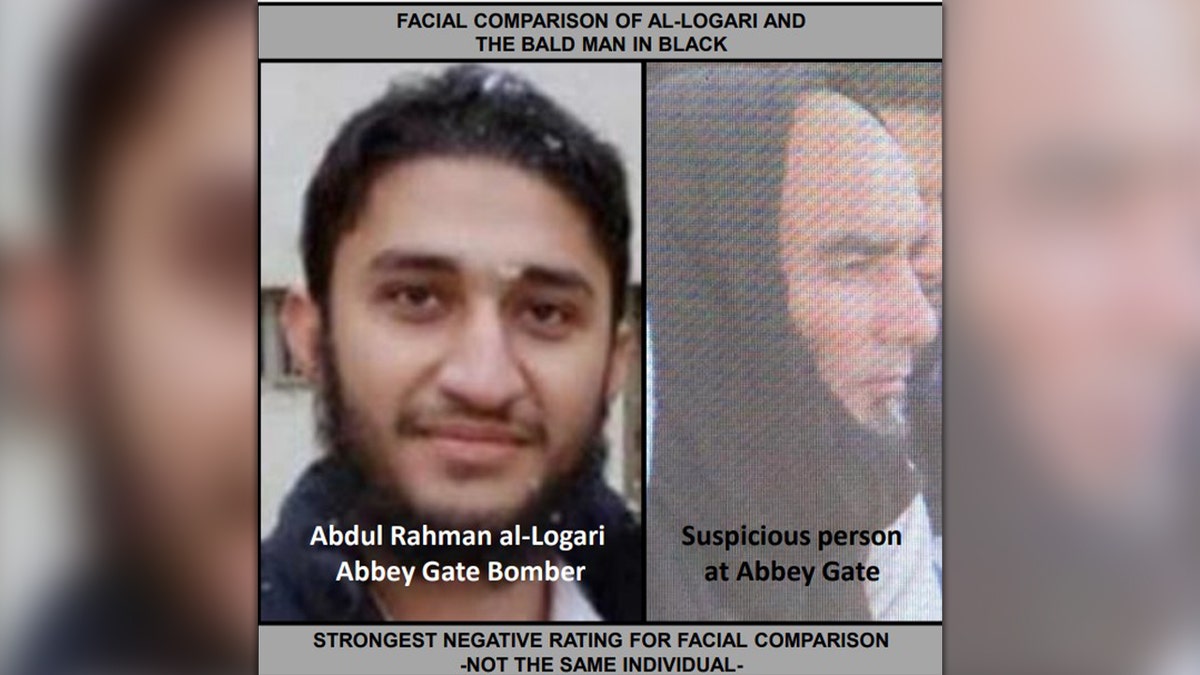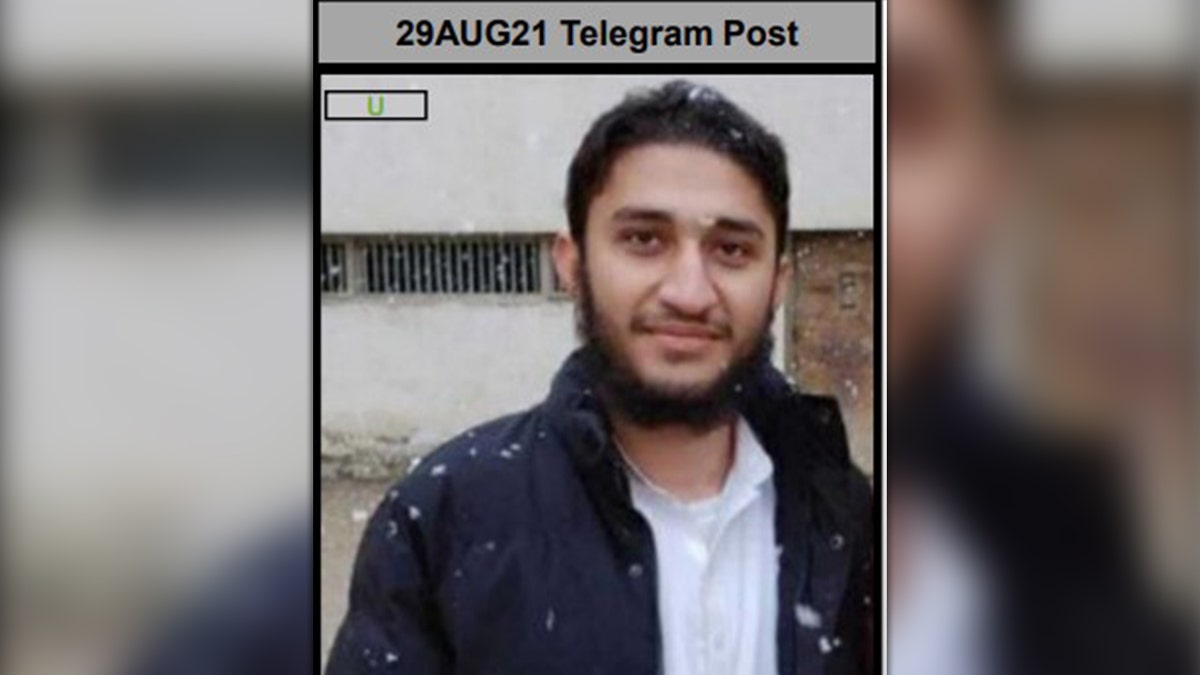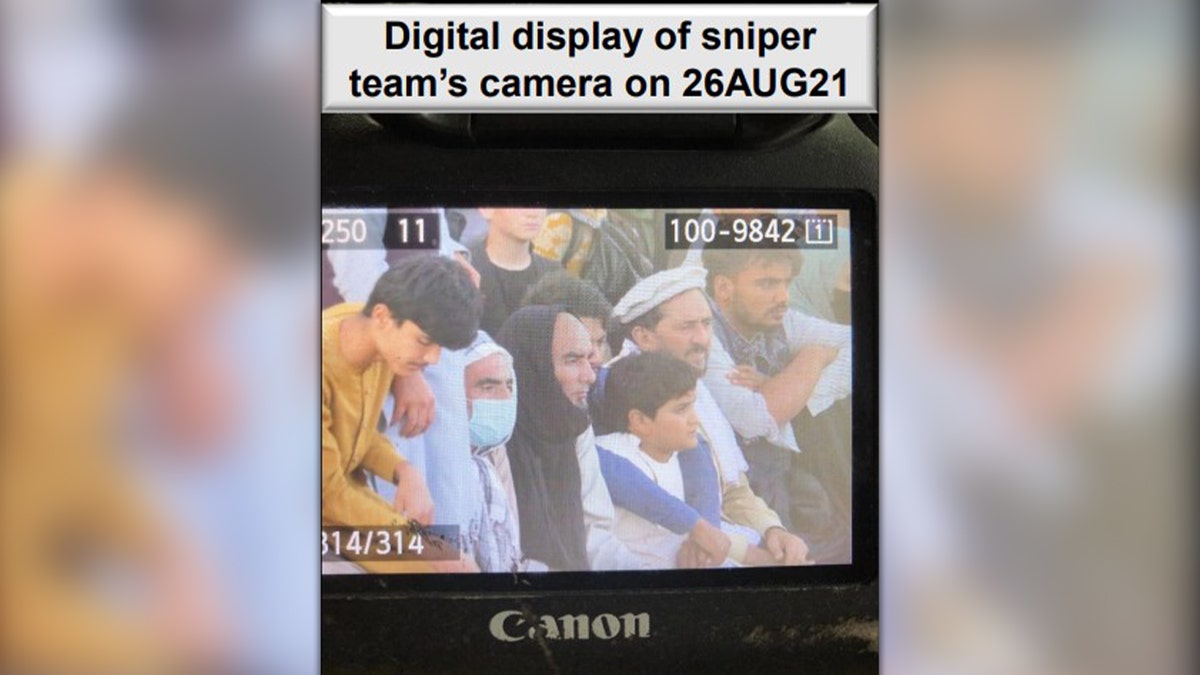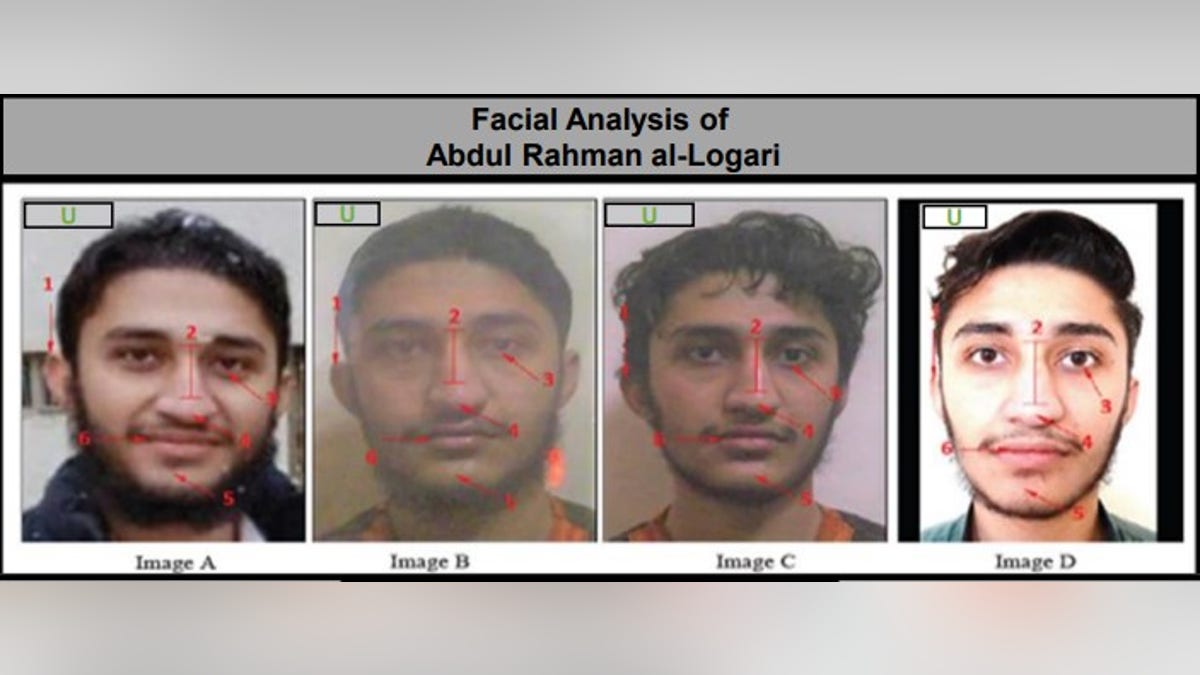
A review released by U.S. Central Command on Monday found there to be no evidence that Marine snipers at Abbey Gate in Kabul had sights on the suicide bomber, Abdul Rahman al-Logari, before the deadly August 2021 attack. (U.S. Central Command)
Following a new supplemental review of the Abbey Gate suicide bombing that left 13 American service members dead during the chaotic Afghan withdrawal in 2021, U.S. Central Command found the Marine sniper team at Abbey Gate did not have the suicide bomber in its sights prior to the attack.
The review, released Monday, included interviews with 50 additional eyewitnesses who were present or had direct knowledge of the Kabul bombing, including 12 service members who were not interviewed for the original investigation due to medical evacuation or treatment.
The review found the sniper team guarding Abbey Gate did not have the suicide bomber in its sights despite subsequent testimony and recollections.
A review of the evidence suggests their memories of the traumatic event could have been affected by the fog of war.

U.S. intelligence and an ISIS video identified the suicide bomber at Abbey Gate to be Abdul Rahman al-Logari, a known member of ISIS-K, the CENTCOM review said. (U.S. Central Command)
Members of the sniper team have said they had the target within their sights and were not given permission to shoot. Commander of U.S. Central Command, Gen. Erik Kurilla, ordered a supplemental investigation last summer following testimony on Capitol Hill from some of the survivors who indicated they believed they could have taken out the bomber and prevented the attack.
U.S. Army Central Command was tasked to get to the bottom of any new evidence or information that could challenge the findings of the initial report of the bombing that left 13 Americans dead.
The initial investigation concluded in November 2021, just two months after the bombing, and was publicly released in February 2022.
PENTAGON RELEASES REPORT ON KABUL AIRPORT ABBEY GATE BOMBING
This new review shows a screenshot of the video stream from the sniper scope of the Marine unit guarding the gate.
The "bald man in black" seen in the video was suspected of being the suicide bomber by some of the Marines. The video shows a middle-aged bald man who was acting suspicious. The two Marine snipers spotted him at 7 a.m. on Aug. 26. According to the report, they lost sight of him at 10 a.m. and the blast occurred at 5:36 p.m.
Among those who gave public testimony was Marine Sgt. Tyler Vargas-Andrews, who testified to the House Foreign Affairs Committee in March 2023. He told lawmakers he saw the suicide bomber responsible for the attack and was told to stand down before the explosion occurred.

The "bald man in black" (pictured in the center above) was believed to be the Abbey Gate suicide bomber by some Marines, but facial analysis between him and the confirmed bomber received a negative match, CENTCOM said. (U.S. Central Command)
"Over the communication network we passed that there was a potential threat and an IED attack imminent. This was as serious as it could get," Vargas-Andrews said, describing the suspected suicide bomber as clean-shaven and dressed in brown with a black vest.
When he asked for permission to shoot, his battalion commander said "I don’t know," according to Vargas-Andrews.
Vargas-Andrews was not interviewed in the original Abbey Gate investigation. He was being treated for a number of traumatic injuries, including having his right arm and entire left leg amputated following the attack.
GOLD STAR FAMILIES DEMAND ANSWERS ON ABBEY GATE TERRORIST ATTACK: 'AN ORCHESTRATED NIGHTMARE'
U.S. intelligence and a video released by ISIS show the suicide bomber to be Abdul Rahman al-Logari, who had a beard and appeared to be several decades younger than the man the sniper team spotted.
Facial comparisons show al-Logari and the "bald man in black" that Vargas-Andrews and his sniper team had identified to be different people. The two received the "strongest negative result," according to this new review.
Post-attack intelligence reporting indicated al-Logari did not arrive at Abbey Gate until immediately before the attack on Aug. 26 – the sniper team began watching the bald man in black at 7 a.m. that day.

Facial analysis of confirmed Abbey Gate suicide bomber, Abdul Rahman al-Logari. (U.S. Central Command)
This new review reinforces the results of the initial Abbey Gate investigation, finding no specific individual was identified as the bomber prior to the attack. U.S. intelligence assessed al-Logari, a known member of ISIS-K, to be the suicide bomber a few hours later.
The U.S. had biometric information on him because he had spent time at Bagram prison in Afghanistan. Since the attack, multiple intelligence agencies have individually confirmed al-Logari was the suicide bomber.
CLICK HERE TO GET THE FOX NEWS APP
Families of the 13 service members killed in the attack and several U.S. service members who survived the attack were briefed together by the investigators of the review earlier this month.
"Our focus continues to be on fulfilling our solemn obligations to the Abbey Gate Gold Star Families," a CENTCOM spokesperson said. Defense Secretary Lloyd Austin and General Erik Kurilla have both been briefed on the results of this review.
Thirteen U.S. service members – 11 Marines, one soldier and one sailor – and 170 Afghan civilians were killed at Abbey Gate on Aug. 26, 2021, just days before the chaotic Afghan withdrawal came to a close.
The bomb exploded at Abbey Gate just outside Kabul’s Hamid Karzai International Airport, injuring more than a dozen U.S. service members and 150 Afghan civilians.

